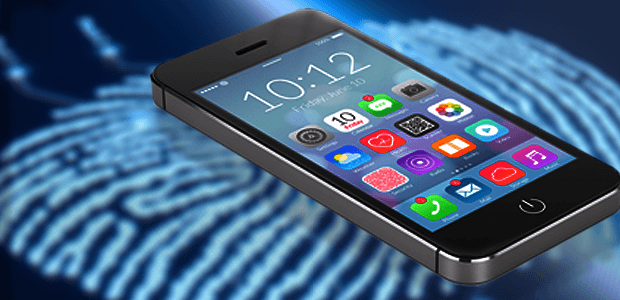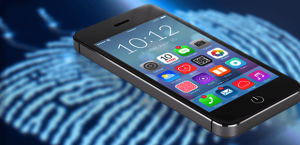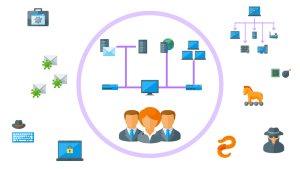In today’s world, mobile devices are an integral part of our lives. From communication and entertainment to banking and shopping, we rely on our smartphones for almost everything. However, with the increasing use of mobile devices, comes an increasing need for mobile forensics. Mobile forensics is the process of collecting, analyzing, and preserving digital evidence from mobile devices. In this blog, we will discuss practical mobile forensics approaches that can help investigators gather evidence from mobile devices.
- Physical Acquisition Physical acquisition involves creating a bit-by-bit copy of the mobile device’s storage. This approach is useful when the device is locked, encrypted, or damaged. It enables investigators to recover deleted data and bypass encryption. However, physical acquisition can be time-consuming, and the process requires specialized tools and expertise.
- Logical Acquisition Logical acquisition is a non-invasive approach that involves copying only the active data from the mobile device. This approach is suitable for unlocked devices and can be done using a forensic tool or mobile device management (MDM) software. Logical acquisition is faster than physical acquisition and provides investigators with valuable information such as call logs, text messages, and app data.
- Cloud Forensics Cloud forensics involves analyzing data stored in the cloud. Many mobile devices automatically back up data to cloud storage, making it a valuable source of evidence. Cloud forensics can be useful in cases where the physical device is unavailable or inaccessible. However, investigators need to obtain legal permission to access cloud data.
- Live Forensics Live forensics involves analyzing data on a live or active device. This approach is useful in cases where the device is suspected of being used in an ongoing crime. Live forensics allows investigators to collect evidence in real-time, preventing data loss or tampering. However, live forensics requires specialized tools and expertise and can be challenging to perform without affecting the device’s performance.
- File System Analysis File system analysis involves analyzing the file system of the mobile device. This approach is useful in cases where investigators need to recover deleted data or find hidden files. File system analysis can be done using forensic tools, and it provides investigators with detailed information about the device’s storage.
In conclusion, mobile forensics is a complex and challenging field. However, by using these practical mobile forensics approaches, investigators can gather valuable evidence from mobile devices. Whether it’s physical or logical acquisition, cloud forensics, live forensics, or file system analysis, each approach provides unique insights into the device’s data. By using a combination of these approaches, investigators can build a strong case and bring criminals to justice.
Advantages
There are several advantages to using practical mobile forensics approaches in investigations. These advantages include:
- Access to Valuable Evidence: Mobile devices contain a wealth of information that can be used as evidence in investigations. By using mobile forensics approaches, investigators can recover data that may have been deleted or hidden, providing valuable insights into the suspect’s activities.
- Speed: Some mobile forensics approaches, such as logical acquisition, are faster than others, such as physical acquisition. This means that investigators can quickly gather and analyze data, allowing them to make decisions faster and potentially solve cases more quickly.
- Non-Invasive: Some mobile forensics approaches, such as logical acquisition, are non-invasive, meaning they do not affect the device’s operation. This is important when dealing with active or ongoing investigations, as it prevents the suspect from becoming aware of the investigation.
- Remote Access: Some mobile forensics approaches, such as cloud forensics, allow investigators to access data remotely. This is useful when the physical device is unavailable or inaccessible, and can save time and resources.
- Comprehensive Analysis: Mobile forensics approaches allow for a comprehensive analysis of the device’s data, providing insights into the suspect’s activities and potentially uncovering connections to other suspects or crimes.
- Admissible Evidence: Mobile forensics evidence can be admissible in court, providing a strong basis for a case and potentially leading to a conviction.
Overall, mobile forensics approaches provide investigators with valuable tools and techniques for gathering evidence in investigations. From speed and non-invasiveness to remote access and comprehensive analysis, these approaches offer many advantages that can help investigators solve cases and bring criminals to justice.
Disadvantages
While practical mobile forensics approaches offer many advantages, there are also some disadvantages to consider. These include:
- Privacy Concerns: Mobile devices contain a lot of personal and sensitive information, and the collection and analysis of this data can raise privacy concerns. Investigators must obtain legal permission to access and analyze the data, and they must ensure that they do not exceed the scope of the permission granted.
- Complexity: Mobile forensics can be complex, and it requires specialized tools, expertise, and training. This means that investigators must have the necessary skills and resources to perform mobile forensics effectively.
- Device Limitations: Some mobile devices may be locked or encrypted, making it difficult or impossible to access the data. In addition, some devices may have limitations that prevent investigators from collecting certain types of data.
- Data Tampering: Mobile devices can be easily tampered with, and the suspect may attempt to delete or modify data to avoid detection. Investigators must use specialized tools and techniques to ensure that the data they collect is accurate and reliable.
- Cost: Mobile forensics can be expensive, and the cost can vary depending on the tools and expertise required. This means that some investigations may not have the necessary resources to perform mobile forensics.
- Time-Consuming: Some mobile forensics approaches, such as physical acquisition, can be time-consuming, and it can take a long time to analyze the data. This can delay investigations and potentially lead to data loss or corruption.
In conclusion, while practical mobile forensics approaches offer many advantages, there are also some disadvantages to consider. Privacy concerns, complexity, device limitations, data tampering, cost, and time-consuming analysis are all factors that investigators must take into account when performing mobile forensics. By understanding these disadvantages and taking appropriate steps to mitigate them, investigators can use mobile forensics approaches effectively and efficiently in investigations.










